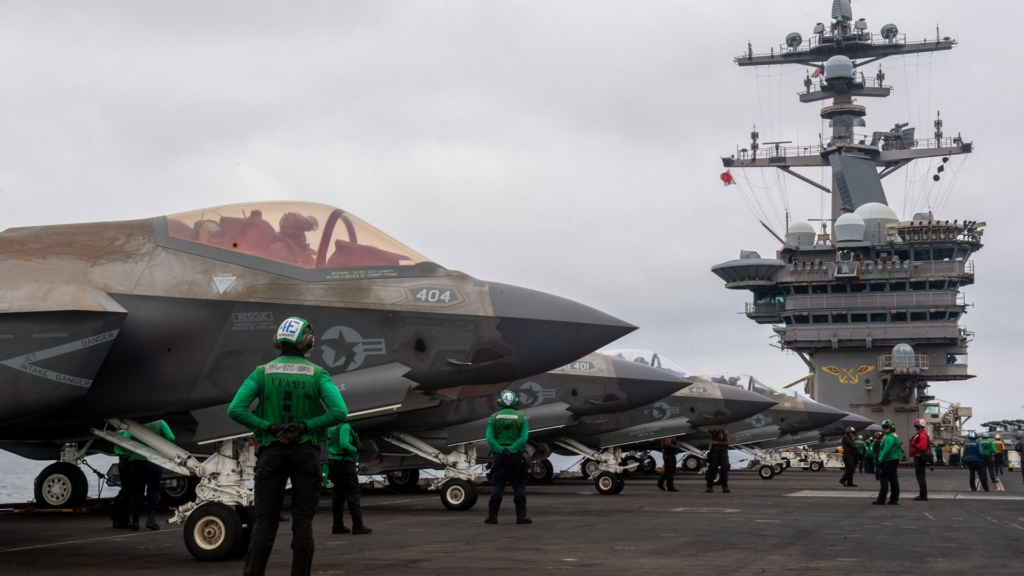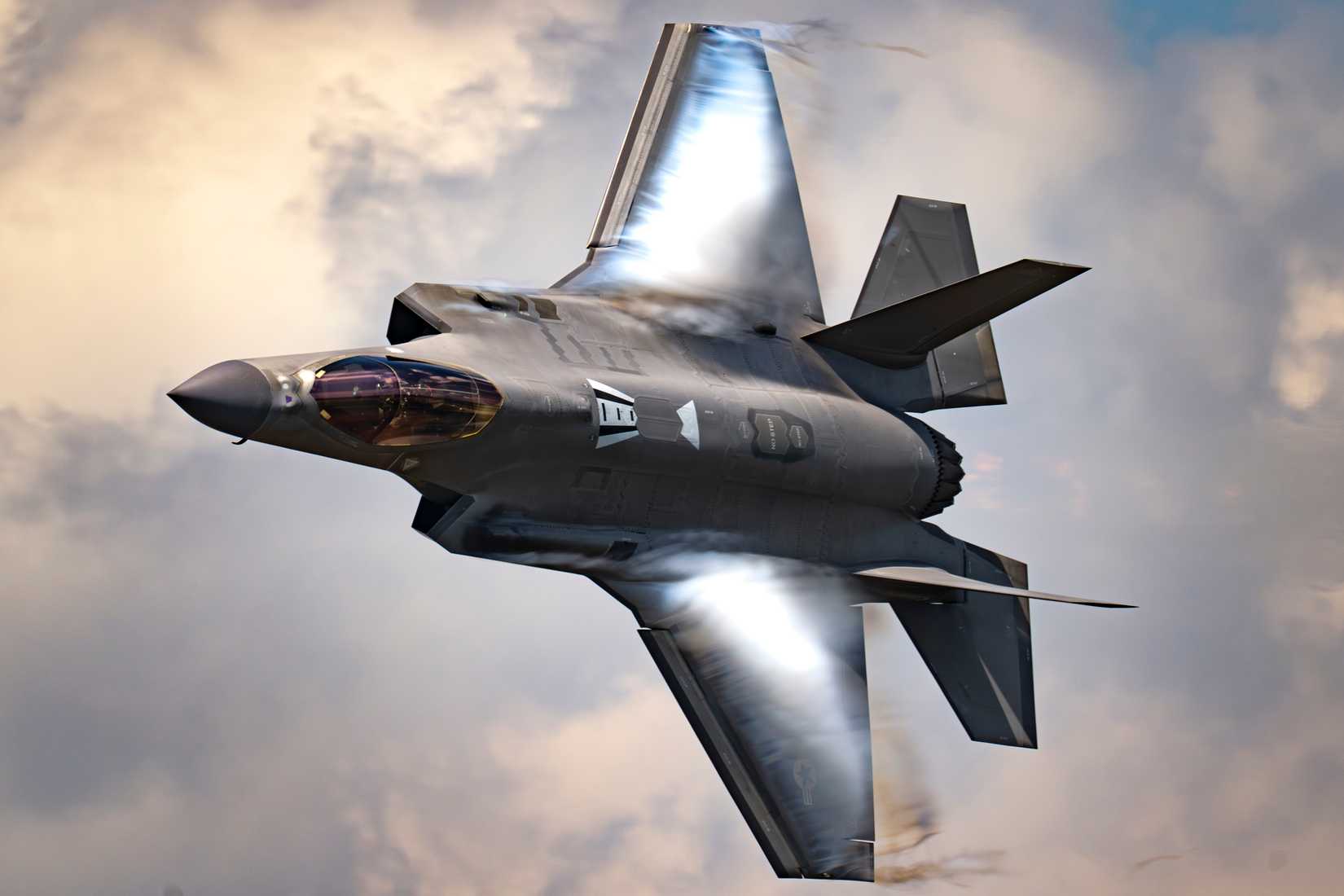The United States Air Force and Navy maintain different aircraft fleets that are shaped by their respective operational environments and strategic requirements. Fighter jets make up 32.2% of the Air Force’s impressive inventory of 5,004 aircraft, (roughly 1,610 fighters), as of 2025, according to the World Directory of Modern Military Aircraft (WDMMA).
The Navy’s aviation branch, which includes both Navy aircraft stationed aboard carriers and bases ashore, operates a significantly smaller fleet of 2,504 aircraft. Fighters account for a greater proportion of this force at 39.7%, or about 995 airframes, highlighting the vital role that these planes play in projecting expeditionary air power. The Navy would theoretically have 1,878 aircraft available, compared to 3,753 in the Air Force, at a 75% readiness rate.
However, maintaining their fleets presents distinct challenges for each service, including the severe corrosive conditions of the sea and the lengthy maintenance cycles related to carrier overhauls and deployments.
TACAIR: The Pointy End Of The Spear
The primary platforms of the Air Force’s diverse fighter fleet are the F-16C/D Fighting Falcon, F-22A Raptor, F-15C/D Eagle, F-15E Strike Eagle, and F-35A Lightning II. The F/A-18E/F Super Hornet is the mainstay of carrier air wings in the Navy fighter fleet, although the F-35C is a growing force as well.
The EA-18G Growler, which uses the same Super Hornet airframe to provide electronic warfare capabilities, is an essential part of naval air power. The F-35C Lightning II is being integrated into carrier air wings and is the first stealth, fifth-generation fighter to be carrier-capable. The Navy has zero bombers, as that is an area that the USAF owns entirely to itself.
|
Platform |
US Air Force |
US Navy |
|---|---|---|
|
Fighters |
1,610 |
995 |
|
Bombers |
140 |
The sixth-generation F-47 of the United States Air Force is designed to quickly eliminate peer fighters, escort stealth bombers, and breach the best anti-air defenses. It will have variable-cycle engines, high supercruise, extreme range, and modular weapons bays that are sized to accommodate new hypersonic missiles.
The Navy’s F/A-XX will also be a sixth-generation jet with cooperative combat drone control, networked anti-cruise-missile defense, and hypersonic weapons. It is not expected to have variable cycle engines but rather very high-thrust for carrier operations. In the naval operations after 2035, the F/A-XX strikes a balance between stealth, survivability, and performance, while the F-47 prioritizes air superiority and long-range strike power.
Rotary Wing: Helo Power
Helicopters are used by the Air Force for specialized tasks like transporting search and rescue, forward air controllers, VIPs, or special operations teams. Long-range, terrain-following helicopters and the tilt-wing V-22 Osprey are used for special operations infiltration and personnel recovery. About 50 Ospreys are in the Air Force as of 2025, according to Air and Space Forces Magazine. These aircraft can reach target areas that are too far away for traditional helicopters.
Conversely, the V-22 and other rotary-wing aircraft, like conventional helicopters, are the lifeblood of both expeditionary and at-sea Navy operations. For carrier on-board delivery, the Navy has replaced the outdated C-2 Greyhound with its own CMV-22B variant. The old, immensely powerful CH-53E Sea Stallion serves in sea-mining duties and heavy lift missions. The workhorse Sikorsky SH-60R/S fulfills antisubmarine and utility missions on a daily basis.
The Air Force and Navy have different readiness figures. On an average day, the Air Force has a little over 100 rotorcraft and tiltrotors ready, while the Navy can field almost four hundred helicopters and V-22s. Both services use helicopters and Ospreys as precise tools for rescue ops and special missions, as well as utility roles, despite the significant difference in fleet sizes.
Special Mission Platforms
The Navy and the Air Force both have a number of valuable ISR and command-and-control platforms. The services use them differently and are pursuing different modernization paths, but with overlap in many fundamental areas. The most well-known aircraft on this front on the Air Force side is the ![]() Boeing RC-135V/W Rivet Joint and the E-3 Sentry, a dish-topped AWACS. Its fleet has shrunk to about thirty aircraft, many of which are over forty years old.
Boeing RC-135V/W Rivet Joint and the E-3 Sentry, a dish-topped AWACS. Its fleet has shrunk to about thirty aircraft, many of which are over forty years old.
The Air Force has started the process of swapping out the E-3 for the E-7A Wedgetail, which is more efficient, modern, and far more capable but extremely costly. The E-8C JSTARS, another Boeing 707 derivative, served a similar role until 2023 as the E-3 but instead of air threats, it finds ground targets. The service now divides that task among satellites, unmanned aircraft, and a new family of radar pods, as it is being retired.
Here’s a snapshot of the different intelligence, surveillance, and reconnaissance (ISR) as well as special missions aircraft, like electronic warfare (EW) or AWACS, by service:
|
US Navy |
US Air Force |
|
E-6 Mercury: Nuclear Response |
VC-25 Air Force One: VIP Airlift |
|
EP-3E Airies II: ISR/EW |
RC-135 Rivet Joint: ISR/EW |
|
P-8A Posiedon: Maritime Patrol |
E-4 Nightwatch: Nuclear Response |
|
P-3 Orion: Maritime Patrol |
E-3 Sentry: AWACS |
|
E-2C/D Hawkeye: AWACS |
E-7A Wedgetail: AWACS |
|
EA-18G Growler: EW |
EA-37B Compass Call: EW |
|
U-2 Dragon Lady: ISR |
|
|
AC-130 Specter: Gunship |
When you look at the Navy side, the strike group’s organic AWACS is the turboprop E-2D Hawkeye. It finds and targets incoming fighters for Navy jets and directs SM-2 or SM-6 missiles from escort ships. In the maritime patrol arena, the EP-3E Aries II serves a similar signals-intelligence role to the Rivet Joint, but as the MQ-4C Triton drone and other unmanned systems advance, its retirement is likely soon.
The P-8A Poseidon, a Boeing 737 derivative, took the place of the turboprop P-3 Orion for long-range maritime patrol. It is capable of strikes using Harpoon missiles and potentially future hypersonic weapons, broad-area maritime surveillance, and anti-submarine warfare, is by far the largest fleet. As tensions change, each detachment of the Navy’s nearly 120 P-8s leapfrogs forward to Okinawa, Sigonella, or Bahrain from a ring of coastal airfields.
Airlift & Tankers
The Air Force is therefore largely responsible for strategic reach. The Air Force’s heavy backbone is the C-17A Globemaster III, which is essential to its intercontinental capabilities. This aircraft can transport humanitarian pallets or M1A2 tanks to Eastern Europe with just a KC-135 sip. The redesigned and stretched C-5M Galaxy can carry heavy loads, including whole F-35 fuselages, Patriot batteries, and helicopters. Meanwhile, tactical lift is provided by the C-130s.
These can land on dirt roads and transport special operations teams or blood supplies. Fuel is crucial for the KC-135Rs, KC-10 Extender, and KC-46A Pegasus fleet, where boom operators use 3-D vision screens rather than picture windows. Due to demand, these are frequently set up to transport both passengers and cargo pallets on the same sortie, making the distinction between airlift and tanker less clear. In ten years, more than two hundred of these aircraft will still be in operation.
The C-40A Clipper is a short-body 737 that serves as the Navy’s largest fixed-wing transport, transporting mail, sailors, and parts between forward bases and shore hubs. The flexibility of vertical landing is provided by the CMV-22B Osprey, which can reach flight decks in the Philippine Sea. In addition, the Marines utilize KC-130Js for cargo or fuel offloading, nighttime F-35B refueling, and high-altitude fire support using the Harvest HAWK missile kit.
The UC-12 Huron, C-20 Gulfstream, and C-26 Metro are examples of smaller props that move people and equipment between outposts. Even Navy public relations aircraft, such as the UC-12 Huron, C-20 Gulfstream, and C-26 Metro, depend on a Hercules. The Air Force expects its fleet of KC-46s to eventually exceed 200 aircraft, despite its studies of a follow-on ‘bridge tanker’ and, farther out, a stealthy next-generation refueler designed to accompany B-21 bombers.
Mobility planners also talk about the potential use of blended-wing-body demonstrators to cut fuel consumption on transoceanic cargo hauls. The Marines, for their part, are working harder on the KC-130J, preparing electronic-warfare and intelligence kits that would allow the aircraft to do anything from jamming radars to gassing up F-35s.
The Fleet Of The Future: Drones
The Air Force and Navy have divergent approaches to integrating unmanned systems, driven by their distinct operational environments and doctrinal approaches to remote warfare. The Air Force’s Reapers, which can loiter for 24 hours with Hellfire missiles and precision bombs, have become central to post- 9/11 wars.
The flight deck’s limits and the particular requirements of maritime surveillance shaped the Navy’s unmanned journey, which began later and took a fundamentally different path. The Navy’s first carrier-based unmanned aircraft, the MQ-25A Stingray, will mainly function as an aerial tanker, increasing the combat range of F/A-18s and F-35Cs by hundreds of miles. Despite having different visions, both services are racing toward a future where collaborative combat aircraft will rule.
The Black Sea has become the Navy’s laboratory for rehearsing and operationalizing the best ways to tie unmanned, robotic systems’ effects with the crewed fleet’s combat power and electronic warfare capabilities, the U.S.’s senior officer supporting Ukraine’s maritime operations said.
In February 2025, Rear Admiral Michael Mattis told an audience at the Center for Strategic and International Studies. He estimated that Russia has lost 40% of its Black Sea fleet so far, as the USNI coverage reported, along with the following quote:
“We’re never going to get to [full integration] through ‘experimentation’ [with robotic unmanned systems without seeing them battle-tested]. We need to figure out how we can use our advanced systems, especially when uncrewed systems become more autonomous [in combat]. It’s not going to be a static fight going forward. [The conflict] shows that a nation with no navy [can stop] one of the world’s premier navies.”
The Air Force is experimenting with “attritable” drones, and the Navy is working toward a ‘hybrid fleet.’ The readiness mathematics for unmanned systems goes against conventional availability calculations. The way each service uses the unmanned fleets, the fastest-growing component of US air power, will be influenced by these philosophical differences.







